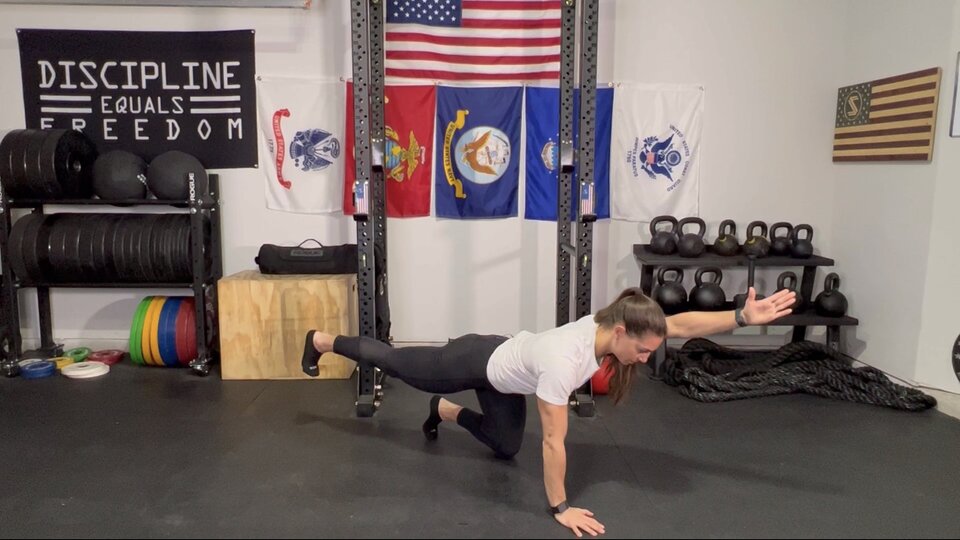One of the primary functions of the core is to protect the spine and prevent injury to it. Nobody wants to walk around with chronic back pain, so building a rock solid core should be a focus for everyone – from high level athletes to everyday gym-goers.
In addition to protecting the spine, the core muscles connect the upper body to the lower body and allow them to work together as one integrated unit. When we move through our lives and complete our day-to-day activities, we require multiple muscle groups to work together simultaneously; very rarely do muscle groups work in isolation. Therefore, if we want our training in the gym to support our lives outside the gym, it makes sense to train our bodies to perform multi-joint movements – not just work one muscle group at a time. Compound movements (i.e. squats, deadlifts, step-ups, rows, etc.) do exactly that.
Building core strength also improves our balance or the ability of our body to maintain its center of mass over its base of support. The ability to maintain balance, coordination, and proprioception (body awareness in space) is a factor of multiple bodily systems – muscular, nervous, skeletal – working together in unison. A strong core enables us to resist external forces and prevent falling.
For athletes, a strong core equals the body’s ability to produce more power. Whether your sport requires throwing a ball, tackling someone, lifting a heavy barbell, swinging a club or bat, or running as fast as you can; the stronger your core musculature, the more power you will have when completing these athletic movements.
Additionally, building a strong core in the gym translates to movements we do outside the gym in our daily lives such as carrying groceries, picking up kids/grandkids, cleaning the house, reaching to grab something off the top shelf, and many others. The stronger we are, the easier these activities of daily living become.
What’s the best way to train the core?
The anatomy of the trunk – both the musculature and the skeleton – makes it so that we can flex, extend, and rotate through the midsection. We probably do all of these things every day in some way or another (i.e. bending down to tie our shoes, rotating to grab the seatbelt).
Some of the more common exercises that people utilize to train the core are sit-ups and crunches. Unfortunately, these types of movements only address spinal flexion. If we include exclusively spinal flexion-type exercises in our core training regimen, then we are missing out on one of the most beneficial aspects of core training – core stability. Training to stabilize the core has tremendous carryover to life outside of the gym, and far more benefits than flexion alone.
What exercises target core stability?
There are numerous exercises you can do that will help you build core stability, both bilaterally (both sides of the body) and unilaterally (one side of the body). Here are some of my favorites:
- Dead bug
- Bird dog
- Tension (hardstyle) plank
- Side plank with rotation
- Suitcase march or carry with kettlebell or dumbbell

903692 316476I believe this website contains some quite wonderful info for every person : D. 83458